The document discusses constructors and destructors in C++ object-oriented programming, explaining their definitions, purposes, syntax, types, and rules. Constructors initialize objects upon creation and can be overloaded, while destructors are responsible for freeing memory allocated to objects. Key types of constructors include default, parameterized, and copy constructors, along with the importance of proper memory management in dynamic constructors.

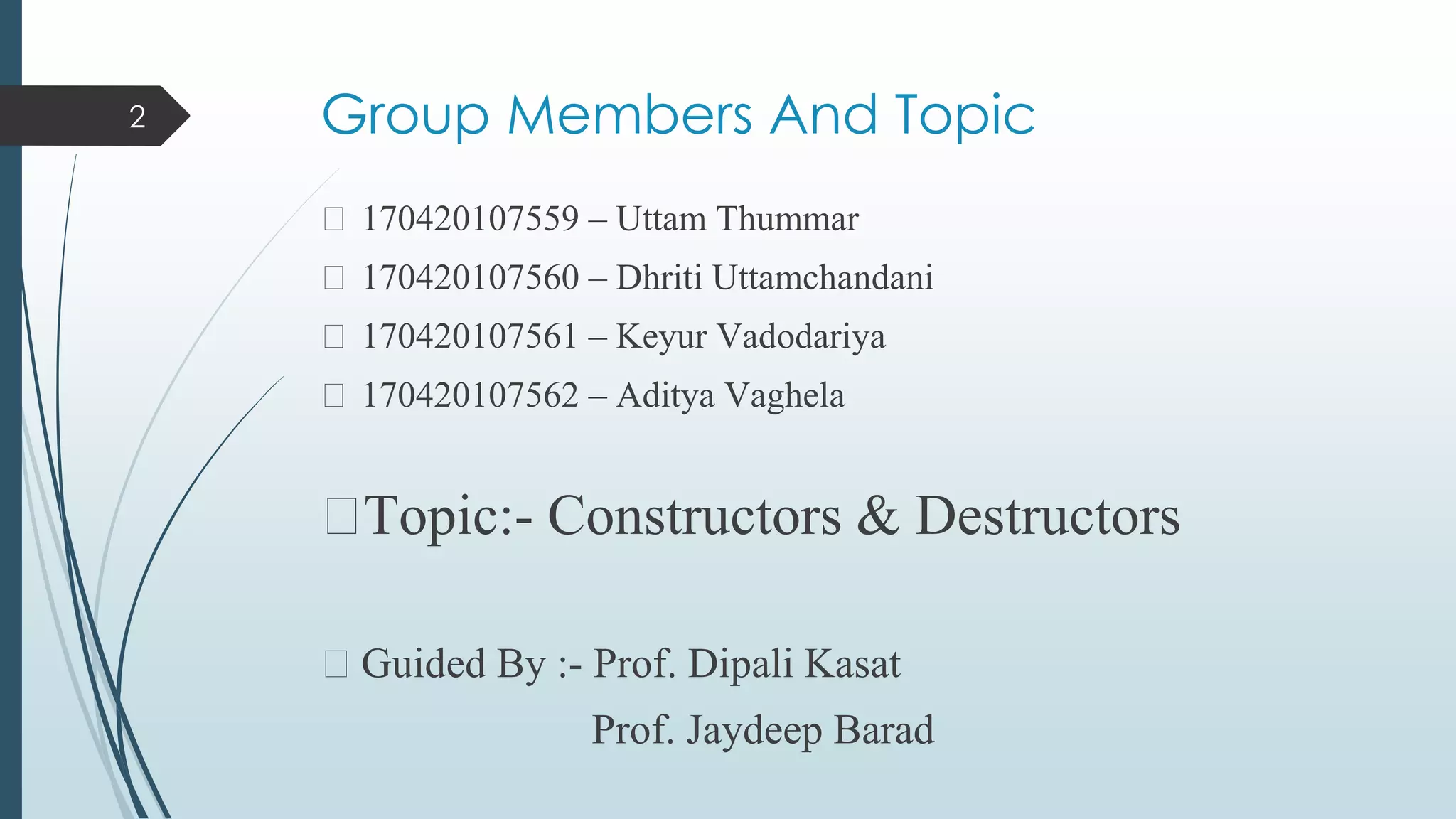
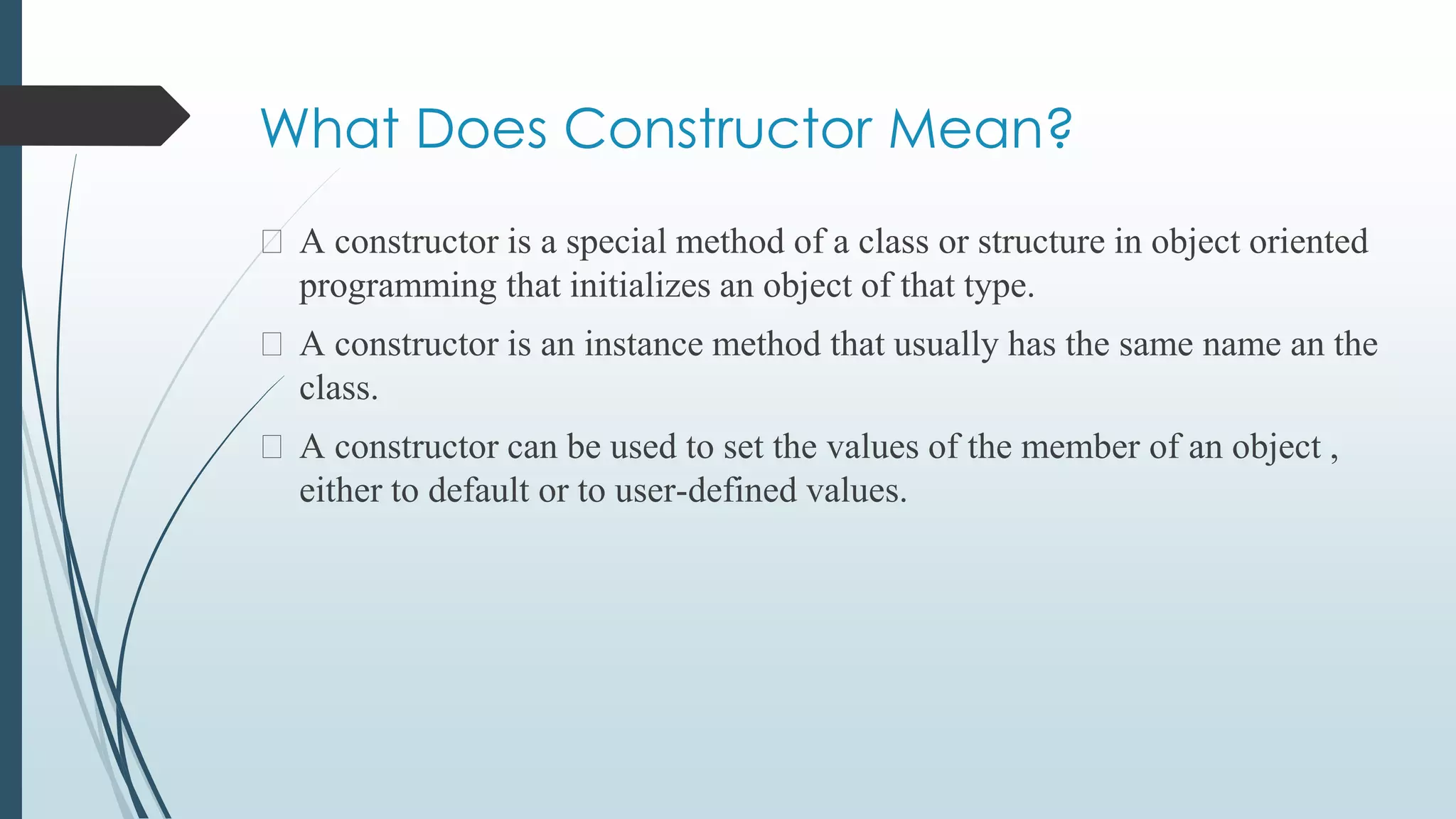

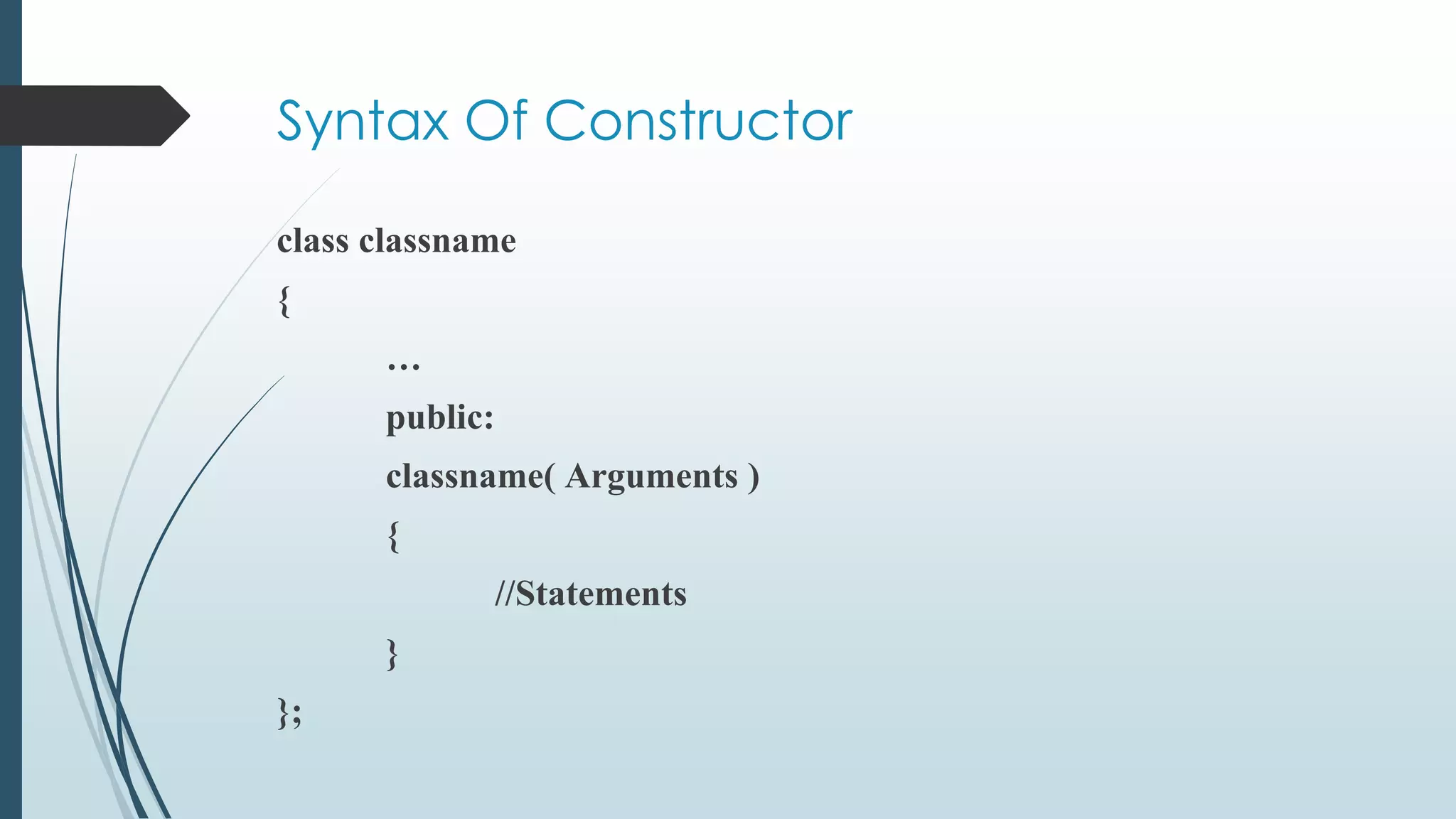
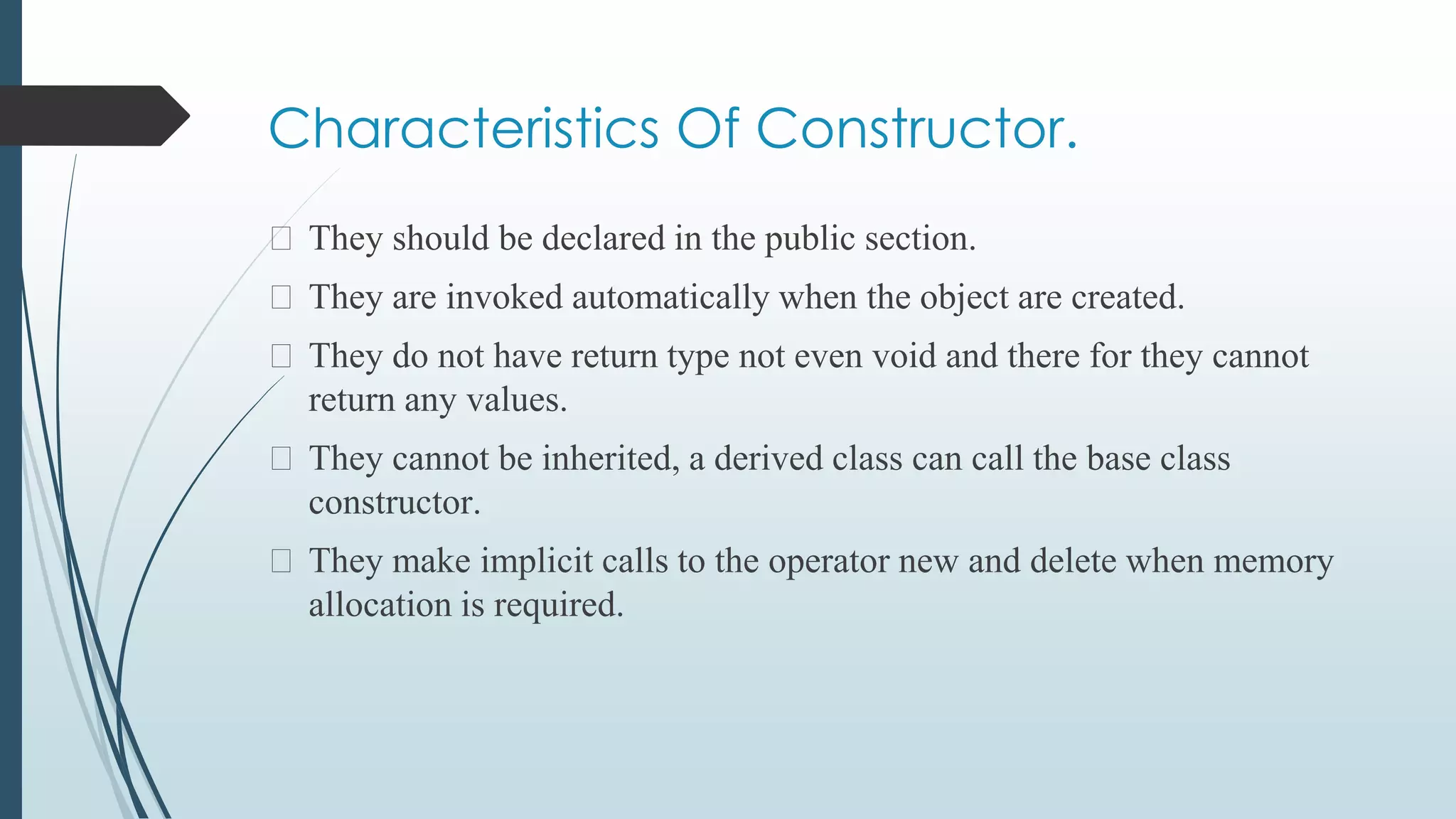
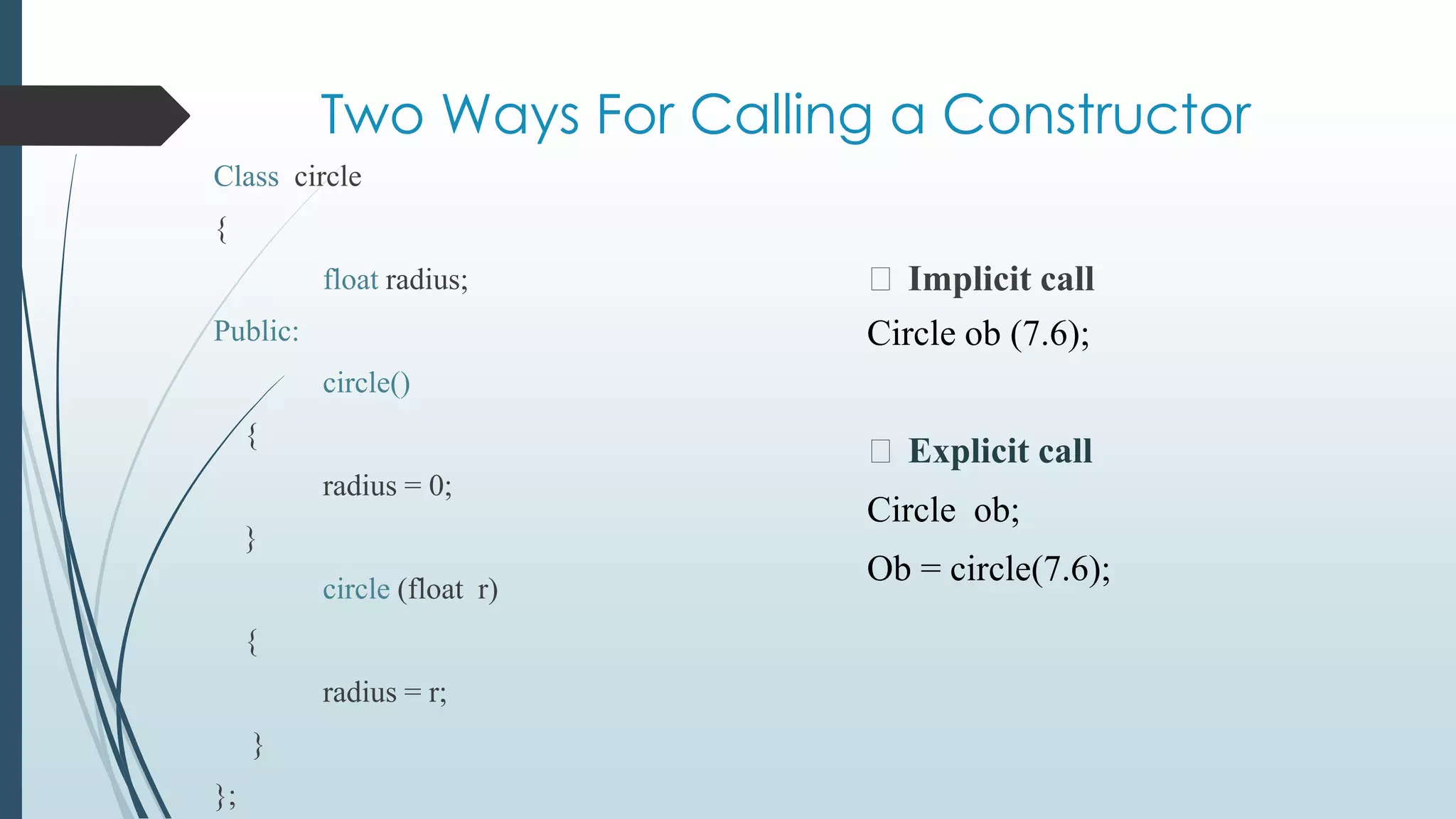
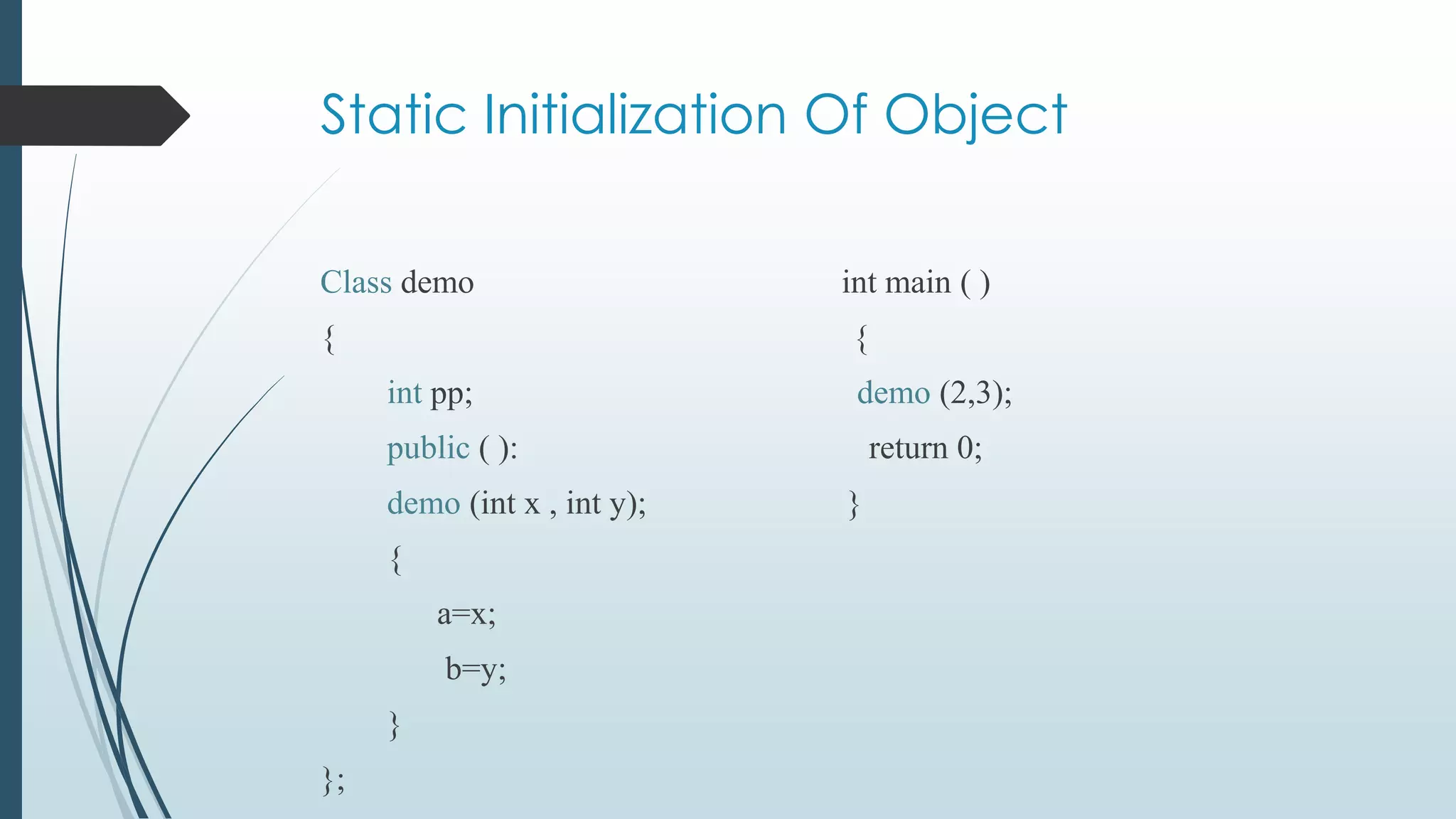
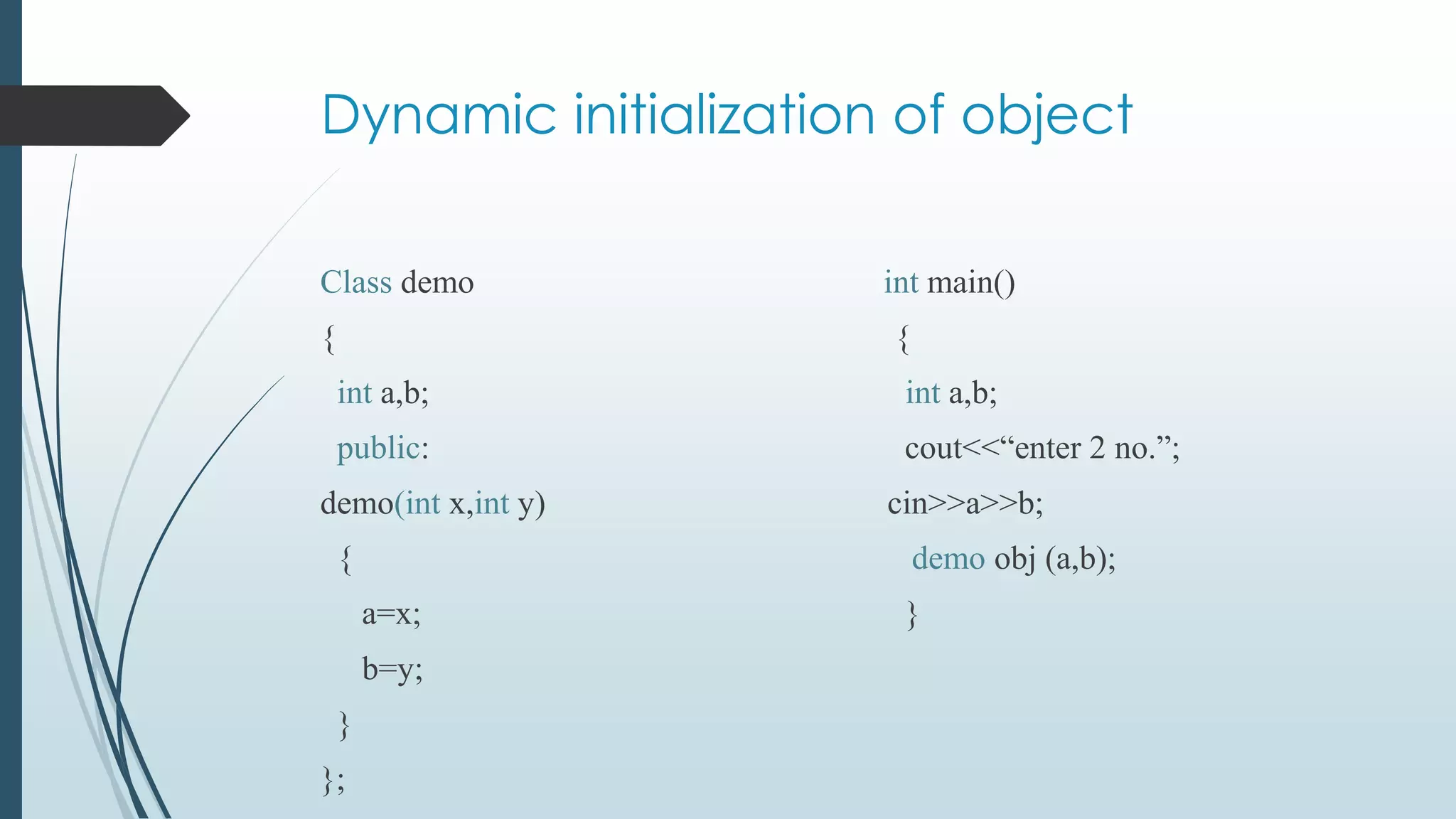

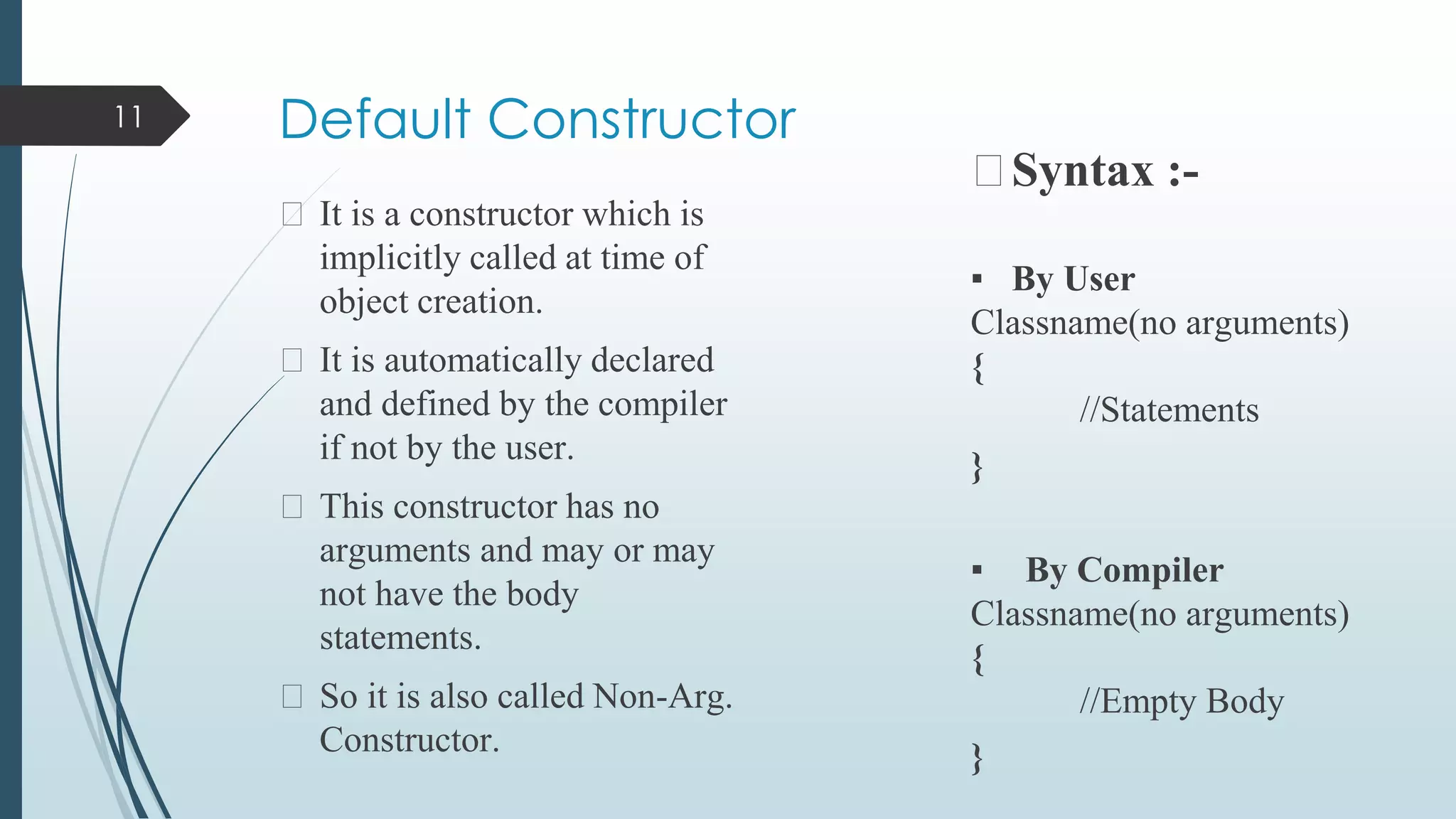
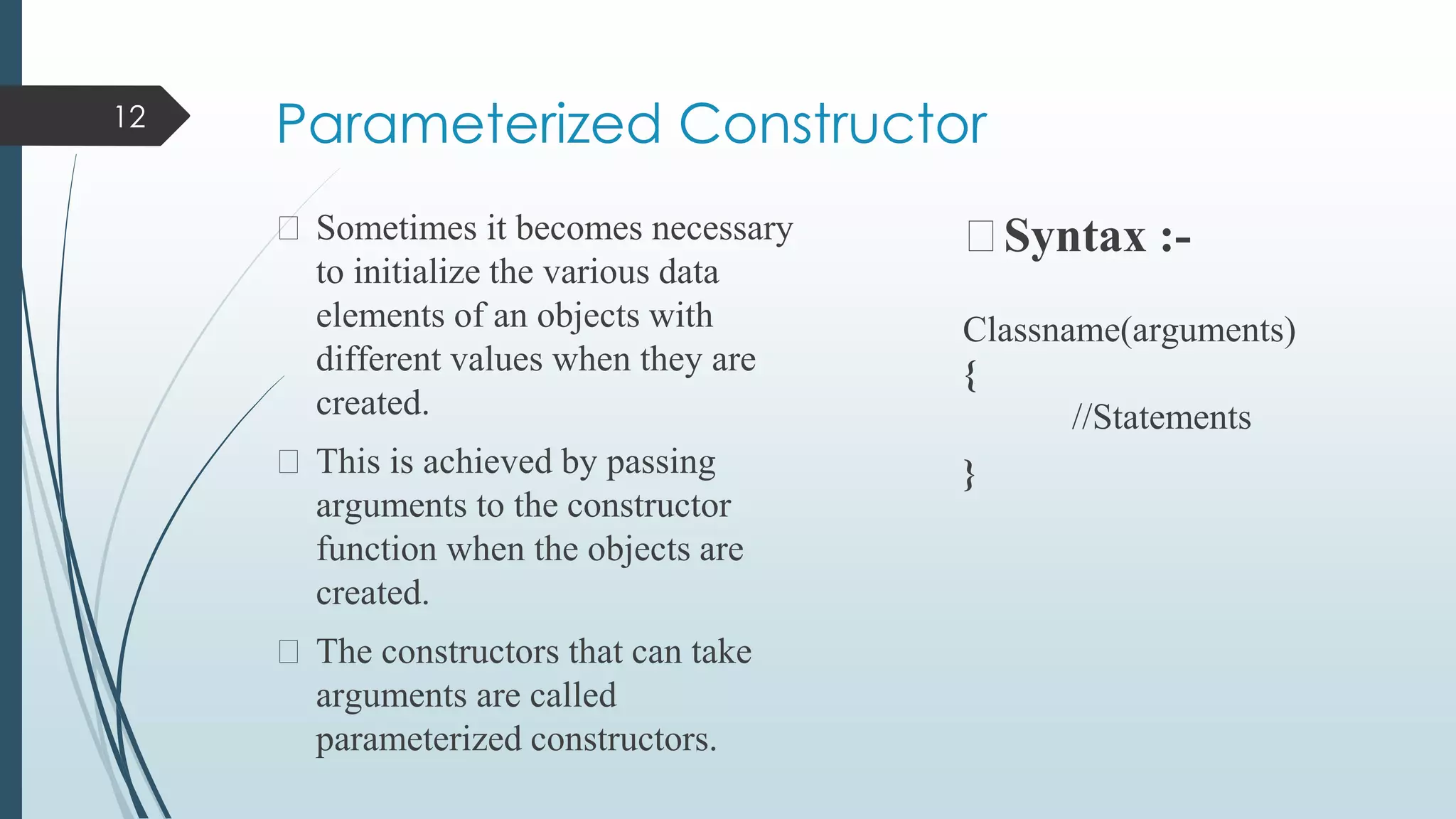
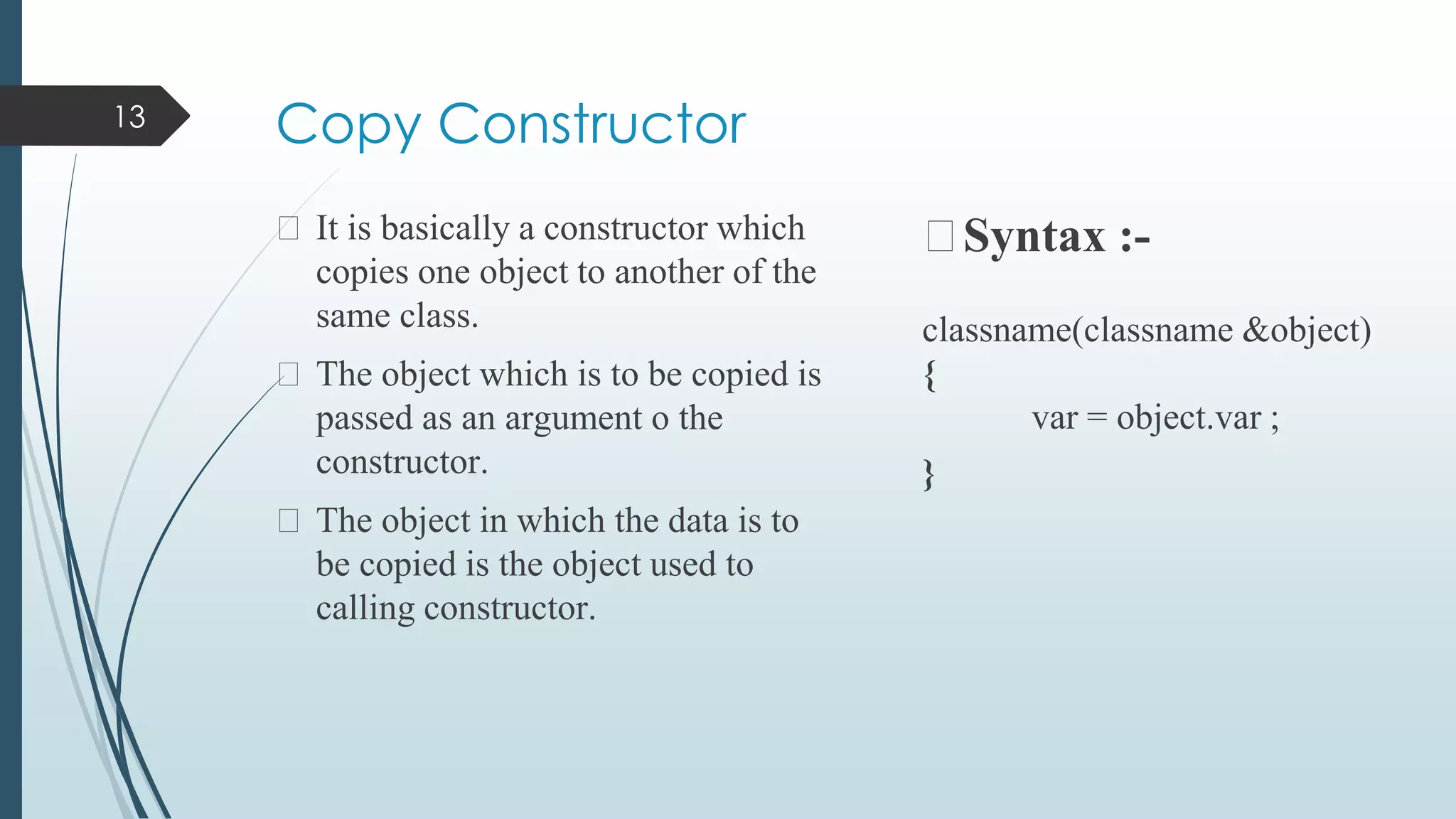
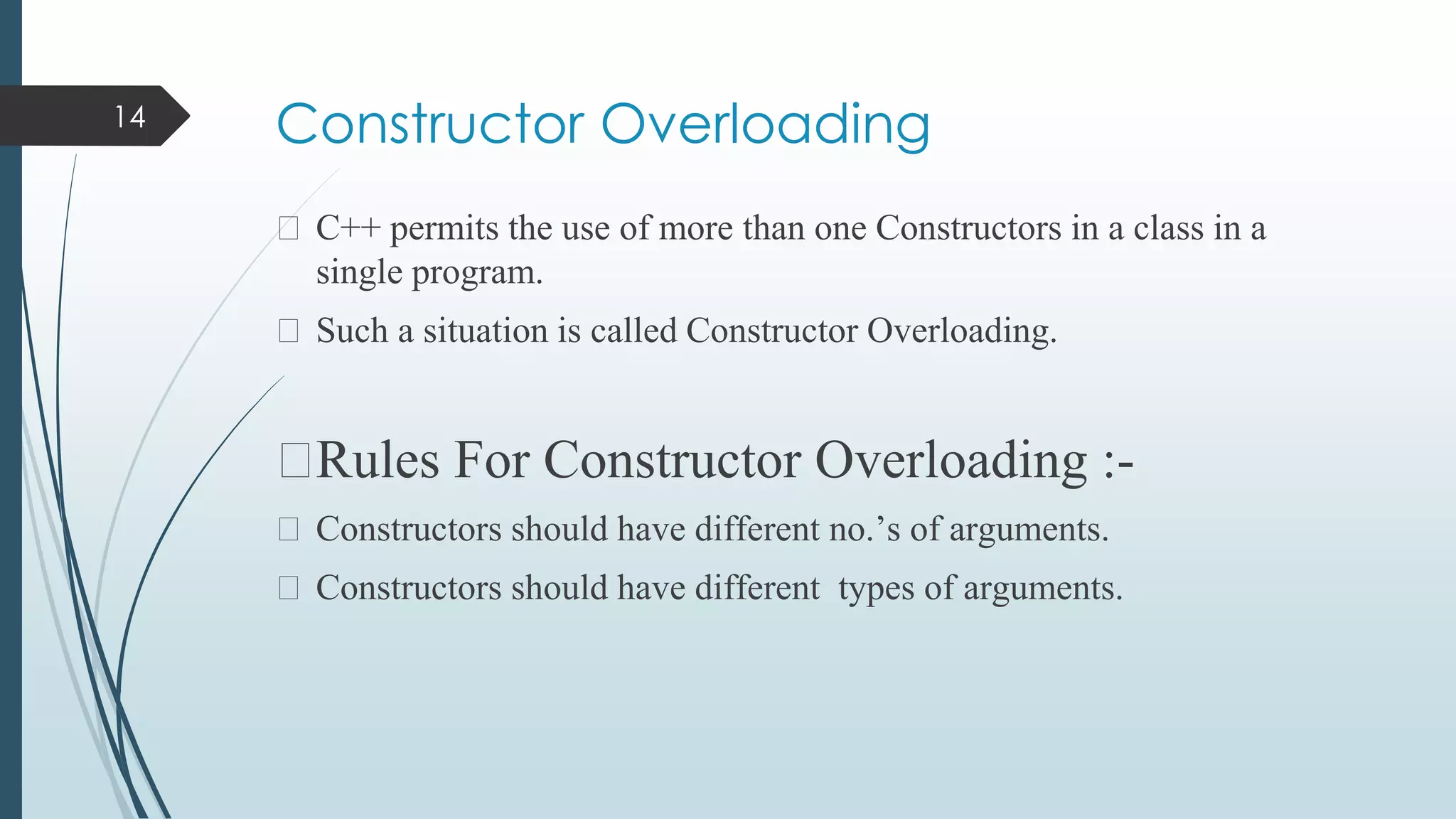
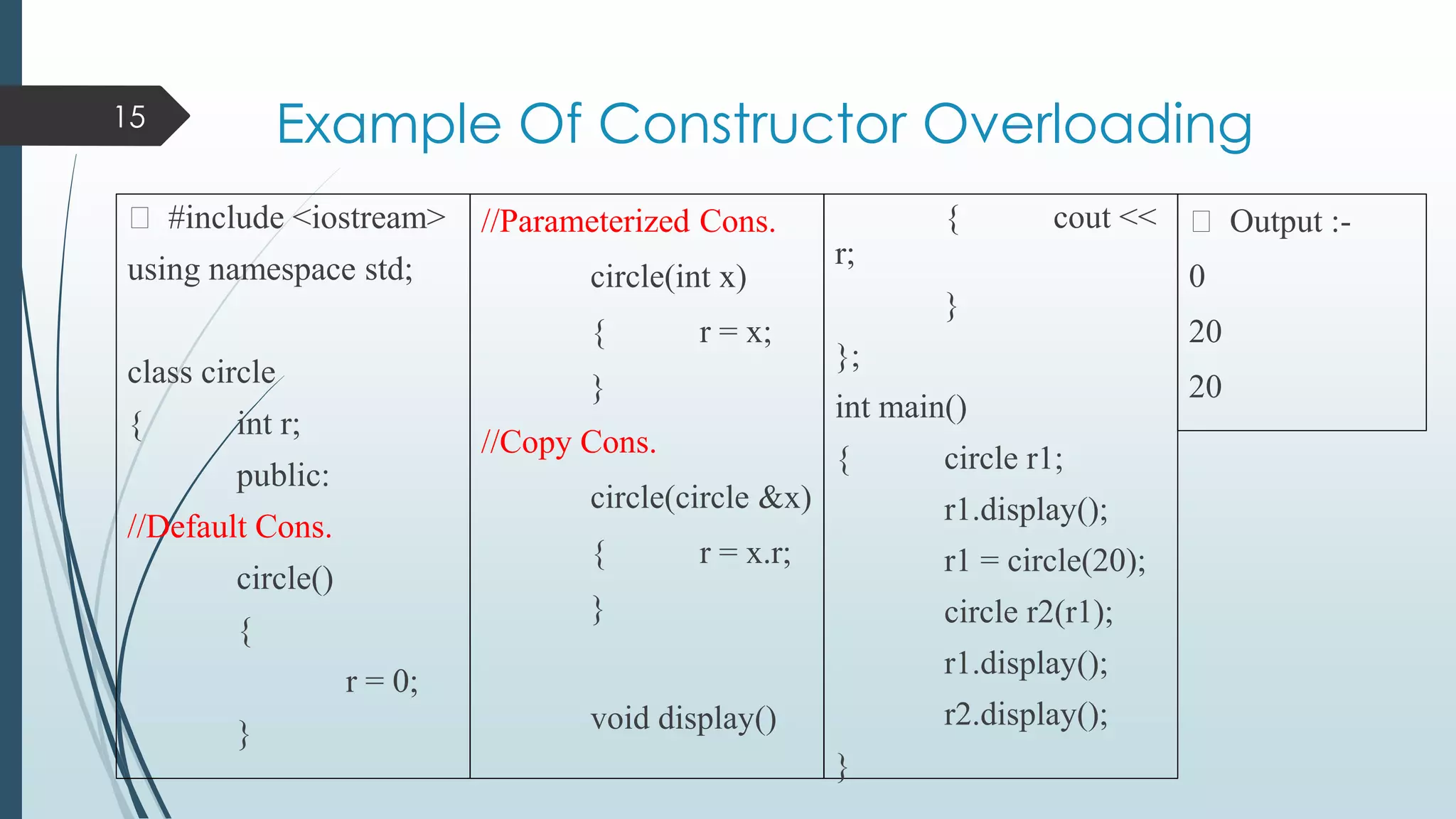
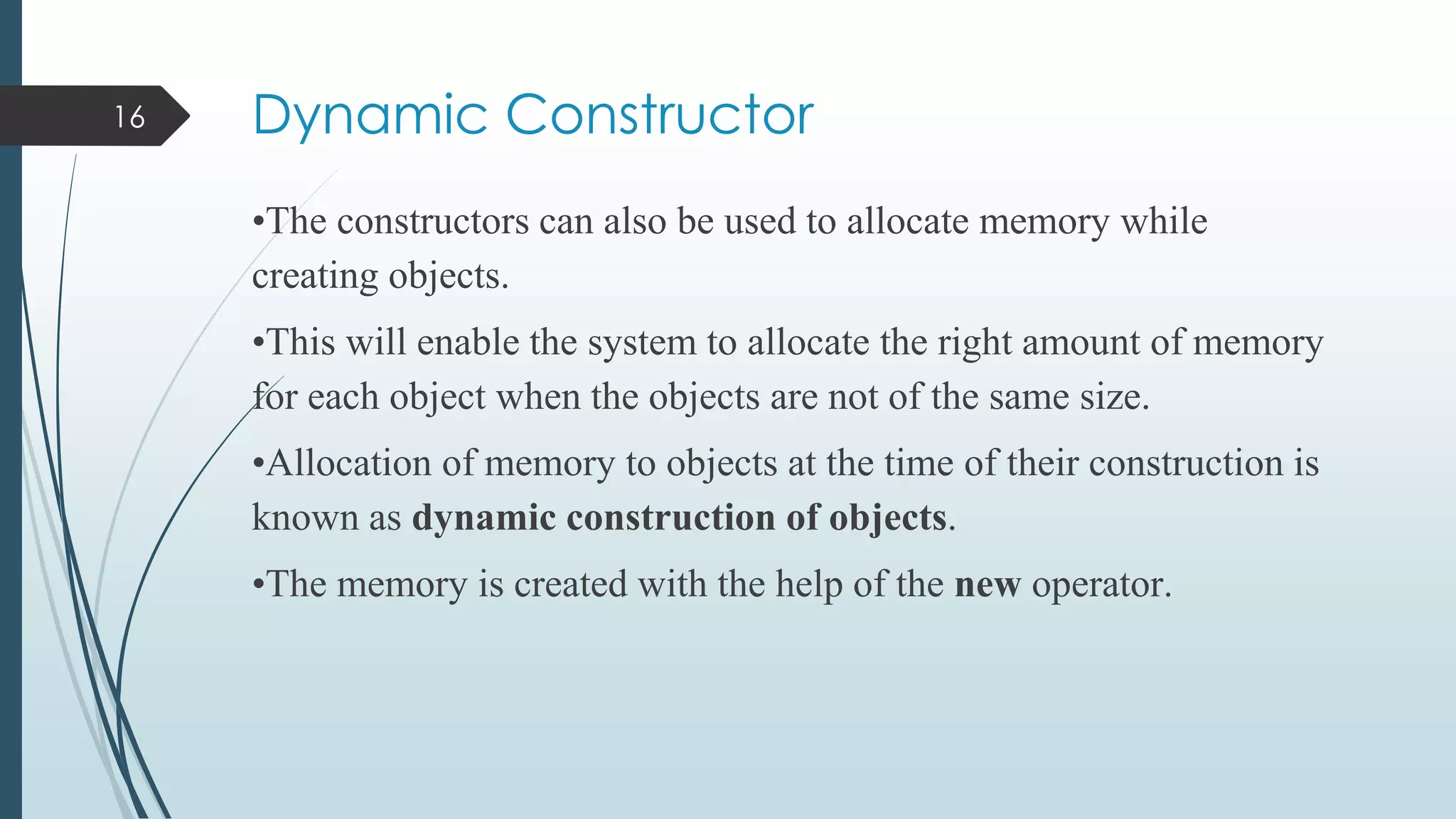


![Example of New and Delete Operators
19
#include <iostream>
using namespace std;
class Test
{
private:
int n;
float *a;
public:
Test()
{
cout << "Enter n: ";
cin >> n;
a = new float[n];
cout << "Enter array
elements." << endl;
for (int i = 0; i < n; i++)
{
cout << i + 1<<”
element:”;
cin >> *(a + i);
}
}
~Test()
{ delete[] a; }
void Display()
{
cout << "nArray
Elements:" << endl;
for (int i = 0; i < n; i++)
cout << *(a + i) <<”t”;
}
};
int main() {
Test s;
s.Display();
}
⮚ Output :-
Enter n:3
Enter array
elements:
Enter 1 element:2
Enter 2 element:4
Enter 3 element:6
Array elements:
2 4 6](https://image.slidesharecdn.com/oopcala1-190410102745/75/Constructors-and-Destructors-19-2048.jpg)

